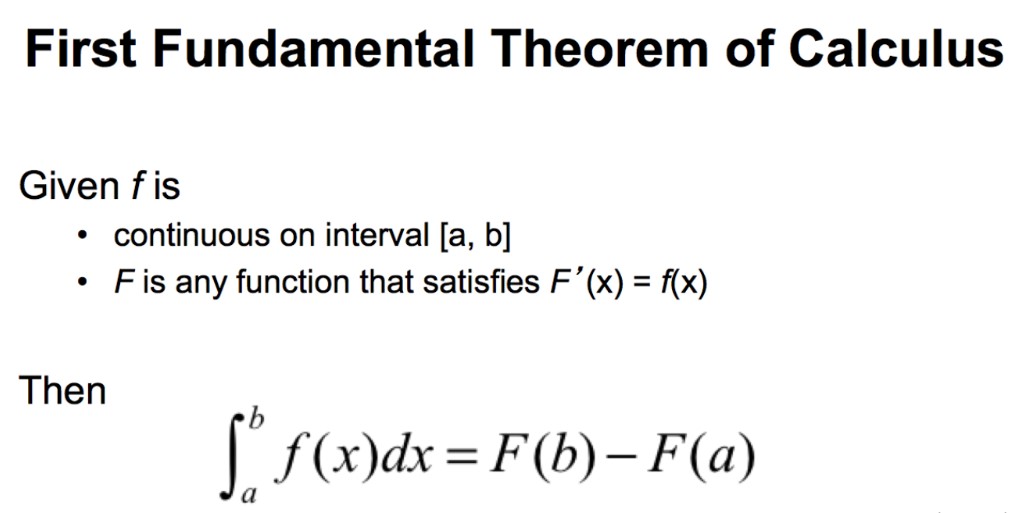Are you struggling to understand the fundamental theorem of calculus? If you are, you’re not alone. The fundamental theorem of calculus is one of the most important concepts in mathematics, and it’s not always easy to grasp. But don’t worry, we’re here to help. In this article, we’ll break down the fundamental theorem of calculus and explain why it’s so important.
What is the Fundamental Theorem of Calculus?
The fundamental theorem of calculus is a theorem that links the concept of differentiation with the concept of integration. It is comprised of two parts: the first part relates the definite integral of a function to an antiderivative of that function, and the second part explains how to find the antiderivative of a function. In simpler terms, it states that differentiation and integration are inverse operations.
Why is the Fundamental Theorem of Calculus Important?
Understanding the fundamental theorem of calculus is crucial for several reasons:
- It provides a way to compute the definite integral of a function without having to use Riemann sums, which can be a tedious process.
- It allows us to calculate areas under curves, volumes of three-dimensional shapes, and other important geometric quantities.
- It plays a fundamental role in many branches of mathematics, including calculus, analysis, and differential equations.
- It is a necessary prerequisite for advanced calculus and other mathematical disciplines, such as physics and engineering.
The Two Parts of the Fundamental Theorem of Calculus
Part 1: The Definite Integral and Antiderivatives
The first part of the fundamental theorem of calculus states that the definite integral of a function f(x) over an interval [a, b] is equal to the antiderivative of f(x) evaluated at b minus the antiderivative of f(x) evaluated at a. In mathematical notation, this can be expressed as:
∫<sub>a</sub><sup>b</sup> f(x) dx = F(b) – F(a)
where F(x) is an antiderivative of f(x). In other words, the definite integral of a function can be found by evaluating its antiderivative at the endpoints of the interval and taking the difference.
Part 2: Finding Antiderivatives
The second part of the fundamental theorem of calculus explains how to find antiderivatives. It states that if f(x) is a continuous function, then the function F(x) defined by
F(x) = ∫<sub>a</sub><sup>x</sup> f(t) dt
is an antiderivative of f(x). In other words, the derivative of F(x) with respect to x is equal to f(x). This means that if we know how to find the antiderivative of a function, we can use the first part of the fundamental theorem of calculus to compute its definite integral.
FAQs
- What is the relationship between the derivative and the integral?
The fundamental theorem of calculus states that the derivative and the integral are inverse operations. In other words, differentiation “undoes” integration, and integration “undoes” differentiation.
- What is an antiderivative?
An antiderivative is a function that is the inverse of a derivative. It is a function whose derivative is equal to the original function.
- What is the difference between indefinite and definite integrals?
An indefinite integral is the antiderivative of a function, while a definite integral is the area under a curve between two points.
- How do you find the area under a curve using the fundamental theorem of calculus?
To find the area under a curve using the fundamental theorem of calculus, you need to integrate the function between the two endpoints of the interval. The result will give you the definite integral of the function over that interval, which is the area under the curve between those two points.
- How does the fundamental theorem of calculus apply to real-life situations?
The fundamental theorem of calculus has numerous applications in real-life situations, such as calculating the rate of change of a quantity over time, finding the area of a bounded region, determining the volume of a solid, and predicting future values based on past data.
- Is the fundamental theorem of calculus difficult to understand?
The fundamental theorem of calculus can be challenging to understand at first, but with patience and practice, it becomes more accessible. It is a fundamental concept in mathematics and has wide-ranging applications in various fields, so it’s worth investing the time and effort to understand it thoroughly.
Conclusion
The fundamental theorem of calculus is a crucial concept in mathematics that links the concepts of differentiation and integration. It provides a way to compute definite integrals, calculate areas under curves, and find volumes of three-dimensional shapes. Understanding this theorem is essential for anyone studying calculus, analysis, or differential equations, as well as those working in fields such as physics and engineering. With practice and perseverance, you can master this concept and apply it to real-world situations.
Partner Site : Financial Management, Vacation Destinations, Home Garden, Landscape Design, Home Decoration, How News Today, Healthy Lifestyle, Finance News, Business Loans, Healthy Update
